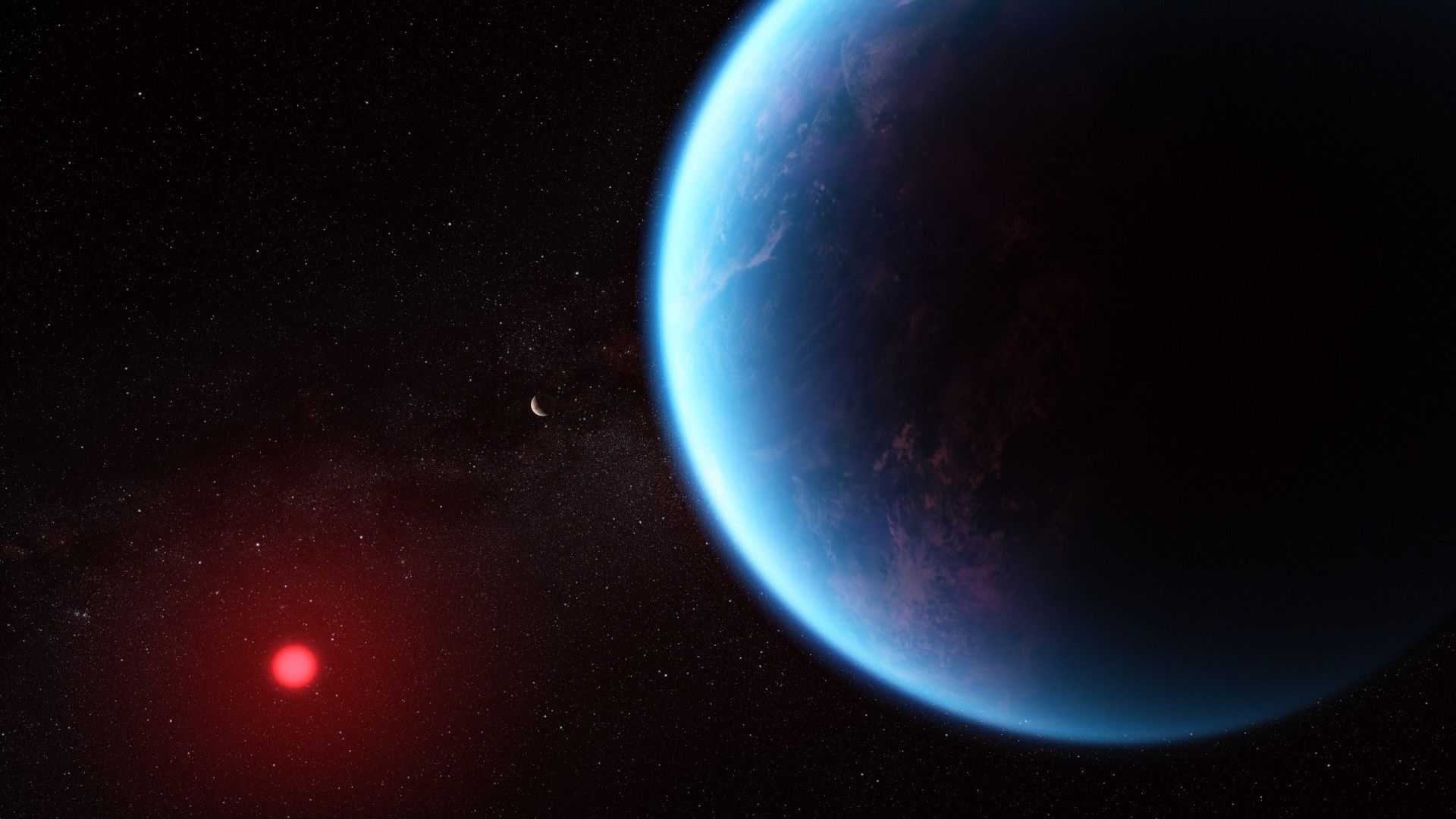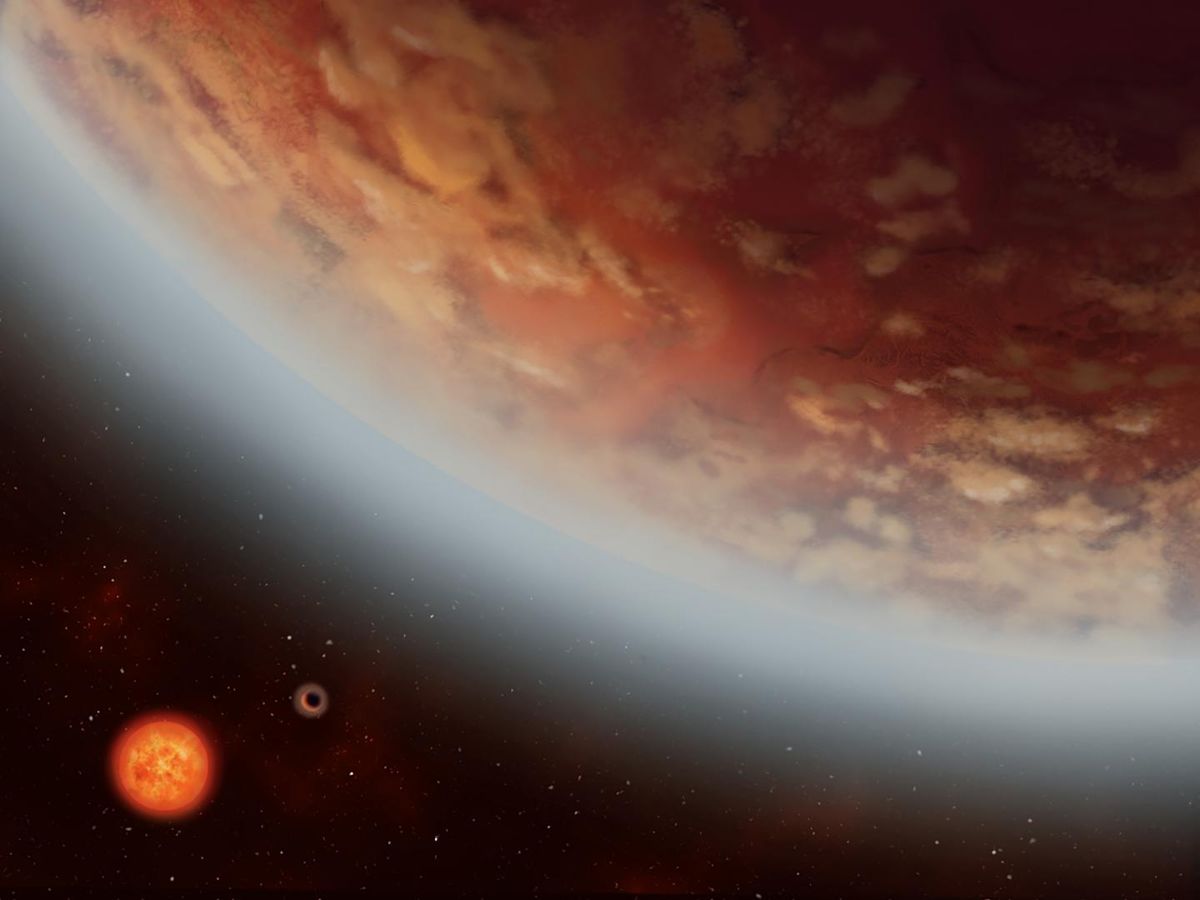Evidence of extraterrestrial life on K2-18b: a discovery that divides 👽
Follow us on Google News (click on ☆)

Credit: NASA, ESA, CSA, Joseph Olmsted
The initial study, published in The Astrophysical Journal Letters, detected signals suggesting the presence of DMS. However, the reliability of these results is being questioned. Researchers have found evidence of DMS on a comet, implying that this molecule could form without the presence of life.
Edward Schwieterman, an astrobiologist, highlights the technical challenges in confirming these discoveries. Current telescopes cannot directly identify specific biomolecules like DNA in the atmospheres of exoplanets. Scientists must therefore rely on the analysis of light spectra, a method subject to interpretation.
The controversy intensifies with the publication of a new study in The Astrophysical Journal, which proposes a non-biological origin for the DMS detected on K2-18b. This research suggests that comets could transport and deposit DMS on exoplanets, a hypothesis that still requires much investigation.
Despite the doubts, Nikku Madhusudhan, lead author of the initial study, defends the need to publish these preliminary results. He insists on the importance of continuing observations to confirm or refute the presence of DMS on K2-18b.

Spectrum of K2-18 b, obtained with the NIRISS and NIRSpec instruments of the Webb telescope, showing an abundance of methane and carbon dioxide, as well as a possible detection of DMS.
Credit: NASA/CSA/ESA/J. Olmstead (STScI)/N. Madhusudhan (University of Cambridge)
Upcoming observations of K2-18b, planned with several instruments, could provide answers. These researches are crucial to determine whether DMS is a true biosignature or simply the result of non-biological chemical processes.
Meanwhile, the scientific community remains divided. Some, like Schwieterman, demand stronger evidence before concluding the presence of life. Others like Madhusudhan believe that all clues, even weak ones, deserve to be explored.
This quest to understand signs of life on K2-18b illustrates the hopes of modern astrobiology. The answers could well redefine our understanding of life in the Universe.
What is a biosignature?
A biosignature is a substance or phenomenon that indicates the presence of past or present life. On Earth, molecules like oxygen, methane, and DMS are considered biosignatures because they are often produced by living organisms.

Illustration of the exoplanet K2-18 b near its dwarf star. Credit: Alex Boersma
However, the detection of these molecules on other planets does not guarantee the presence of life. Non-biological chemical processes can also produce these substances. For example, oxygen can be generated by the photolysis of water, and methane can be produced by geochemical reactions.
The search for biosignatures on exoplanets is therefore a challenge. Scientists must not only detect these molecules but also eliminate possible non-biological explanations. This requires a deep understanding of the chemical and geological processes that can occur on these distant worlds.
How do telescopes detect molecules in the atmospheres of exoplanets?
Telescopes like the James Webb use spectroscopy to analyze the light that passes through the atmospheres of exoplanets. This technique allows determining the chemical composition of the atmosphere by studying the wavelengths of light absorbed or emitted by molecules.
Each molecule has a unique spectral signature, like a fingerprint. By comparing the observed spectra with those known in the laboratory, scientists can identify the molecules present in the atmosphere of an exoplanet.
However, this method is not infallible. Spectra can be subject to interpretation. Moreover, the presence of multiple molecules can mask or mimic the spectral signatures of other substances. This is why detections of molecules like DMS require additional confirmations and in-depth analyses.